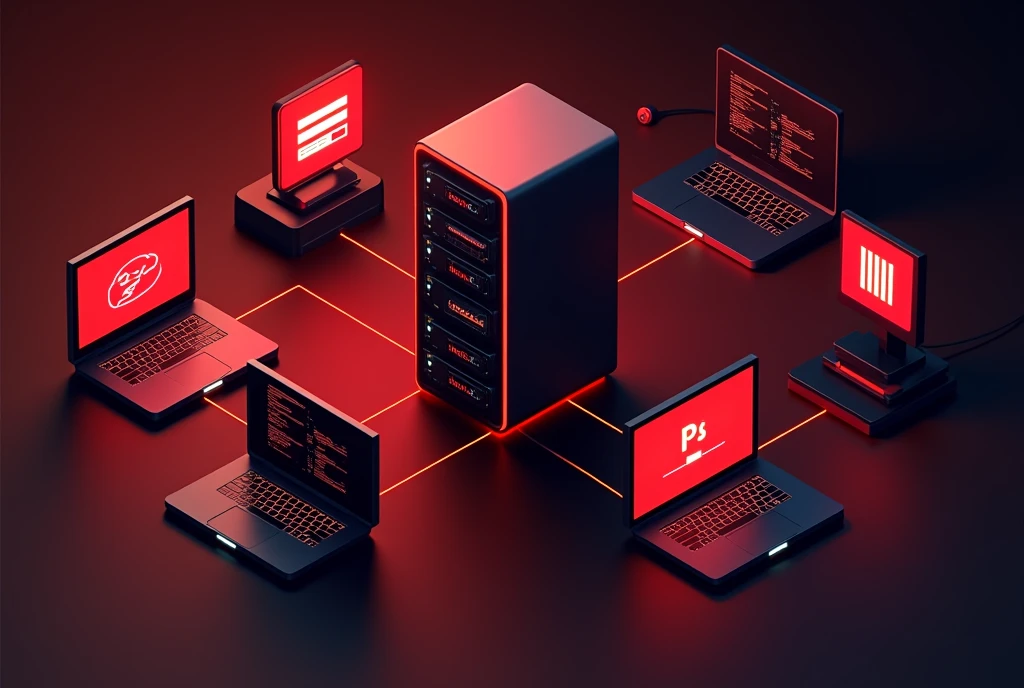What is Edge Computing?
Edge computing is a distributed computing paradigm that brings data processing and storage closer to the source of data generation, thereby minimizing latency and optimizing bandwidth usage. Unlike traditional cloud computing, which centralizes data processing in distant data centers, edge computing utilizes a decentralized architecture that includes nodes and endpoints situated nearer to the devices that produce data. This proximity allows for real-time analytics and quicker decision-making, essential for various applications, especially in the realm of the Internet of Things (IoT).
The fundamental rationale behind edge computing lies in the challenges posed by the exponential growth of data. As the volume of data generated continues to rise, traditional cloud computing can lead to bottlenecks due to high latency that occurs when sending data to remote servers for processing. By performing computations closer to the source, edge computing significantly reduces the delay associated with data transmission, which is critical for time-sensitive applications like autonomous vehicles, smart grids, and real-time video surveillance.
Key terms relevant to edge computing include latency, which refers to the time delay before data transfer begins following an instruction for its transfer; bandwidth, the volume of data that can be transmitted in a fixed amount of time; and data processing, which is the manipulation and management of data to glean insights. Understanding these concepts is vital for comprehending the full scope and advantages of edge computing.
The architecture typically involves distributed nodes that act as intermediaries, processing data locally while still maintaining connectivity to the cloud for additional resources or storage when necessary. This hybrid approach ensures efficiency and enhances user experiences across various sectors.

Benefits of Edge Computing
Edge computing is transforming how data is processed, and its numerous benefits are becoming increasingly critical for businesses and consumers alike. One of the primary advantages is reduced latency. By processing data closer to the source, edge computing minimizes the delay commonly associated with transmitting data to distant centralized data centers. This reduction in latency enhances the performance of applications, particularly in industries such as healthcare, where real-time data processing can be vital for patient monitoring and emergency responses.
In addition to improving speed, edge computing also provides enhanced data security. Since data can be processed locally, organizations can minimize the exposure of sensitive information to potential cyber threats associated with data transmission. For instance, industries handling personal health information or financial data can significantly benefit from implementing edge solutions that keep data closer to its source, thus reducing vulnerability.
Another compelling advantage is improved bandwidth efficiency. By processing data near the edge of the network, businesses can avoid the congested pipeline leading to centralized data centers. This ensures a more streamlined flow of information, allowing companies to either reduce their bandwidth consumption or allocate their resources more effectively. For example, smart cities deploying edge computing to manage traffic signals rely on minimal data transmission, thus optimizing overall network performance.
Furthermore, edge computing facilitates real-time data processing, which is essential for applications requiring immediate insights. By leveraging this technology, companies such as logistics firms have improved their operational efficiency with instant data analytics on inventory and delivery routes.
Additionally, organizations begin to see environmental benefits, as reduced data transfer to centralized data centers diminishes overall energy consumption. This aspect aligns with growing sustainability efforts, reinforcing edge computing’s role in modern data management strategies.
Challenges and Limitations of Edge Computing
Edge computing has emerged as a transformative approach to data processing, yet it is not without its challenges and limitations. One prominent concern is data security and privacy. As data is processed closer to the source, potential vulnerabilities arise, especially if the data involves sensitive information. Implementing the necessary security measures across numerous edge devices can be complex and often requires significant investment in both technology and ongoing maintenance. This challenge underscores the need for robust encryption and data protection protocols at the edge to ensure the integrity and confidentiality of data.
Another significant challenge in edge computing is the complexity of managing distributed networks. Unlike traditional centralized systems, edge computing relies on a plethora of devices working in unison, which can complicate both management and troubleshooting. The distribution of resources can lead to inconsistent data processing and communication failures, thereby impacting the overall reliability of the system. Organizations need to devise sophisticated management strategies and tools to effectively monitor and control these distributed networks, which can be resource-intensive.
In addition to management complexities, organizations may face potential consistency and reliability issues. Variability in processing power, data transmission rates, and network reliability at the edge can disrupt the seamless operation that businesses expect from their computing systems. Ensuring consistent performance across different edge locations becomes crucial, particularly when real-time data analysis is required.
Finally, there is a pressing need for specialized skills and training in the workforce. Transitioning to edge computing often necessitates advanced knowledge in networking, cybersecurity, and data analytics. The scarcity of professionals with expertise in these areas can hamper the implementation of effective edge solutions. Organizations must prioritize training and development programs to equip their teams with the requisite skills to thrive in an edge computing environment.

The Future of Edge Computing
As we venture into a more interconnected world, the future of edge computing appears increasingly promising. The integration of emerging technologies such as the Internet of Things (IoT), artificial intelligence (AI), and 5G networks is poised to drive significant advancements in how data is processed and utilized. Edge computing is expected to play a crucial role in this landscape, allowing data to be processed closer to its source, thereby reducing latency and enhancing performance.
One of the most notable trends is the anticipated growth of edge computing applications across various sectors. In healthcare, real-time data analysis can facilitate improved patient monitoring and timely responses, enabling medical professionals to make informed decisions swiftly. Similarly, in the automotive sector, edge computing is instrumental in the development of autonomous vehicles, where timely data processing is necessary for safety and navigation. Furthermore, smart cities are expected to leverage edge computing to manage infrastructure efficiently, optimizing energy consumption and enhancing public services through real-time analytics.
Market predictions suggest that the edge computing industry will experience robust growth in the coming years, driven by increased investment and innovation. Businesses adapting to these advancements can harness new opportunities, creating value by improving operational efficiency and enhancing customer experiences. Companies that integrate edge computing into their strategy will likely gain a competitive edge, positioning themselves at the forefront of technological innovation.
Overall, the convergence of edge computing with IoT, AI, and 5G is reshaping industries and leading to unprecedented possibilities. As organizations embrace these technologies, they will uncover new avenues for growth and collaboration. The future of edge computing is not merely about data processing; it is about redefining how we interact with technology and ultimately improving the quality of life across various domains.
Conclusion
Edge computing is revolutionizing how data is processed, offering businesses and consumers faster, more efficient solutions in a rapidly evolving digital landscape. By bringing data processing closer to its source, edge computing significantly reduces latency, improves bandwidth efficiency, and enhances data security. This decentralized approach is particularly critical for industries that require real-time data analytics, such as healthcare, logistics, and smart cities, where timely decision-making can have a direct impact on outcomes.
As the demand for faster, more responsive technology continues to grow, edge computing will become increasingly integrated with emerging technologies like IoT, AI, and 5G. These advancements will drive the next wave of innovation, enabling seamless experiences across sectors like autonomous vehicles, smart grids, and telemedicine. Despite challenges such as managing distributed networks and ensuring robust security protocols, the benefits of edge computing far outweigh its limitations, making it a key player in the future of data processing.
Organizations that invest in edge computing are positioning themselves to stay ahead in a competitive market, improving operational efficiency, customer experiences, and overall sustainability. The future of edge computing is bright, and as more industries adopt this paradigm, we can expect to see significant improvements in the way we interact with technology, making everyday life more connected, efficient, and secure.
FAQ on Edge Computing
What is it?
It is a distributed computing model that processes data closer to its source, reducing latency and improving bandwidth efficiency compared to traditional cloud computing.
How is it different from cloud computing?
Unlike cloud computing, which centralizes data processing in remote data centers, edge computing processes data locally, near the devices generating the data. This results in faster response times and less reliance on long-distance data transmission.
What are the main benefits?
The primary benefits include reduced latency, enhanced data security, improved bandwidth efficiency, and real-time data processing, which is crucial for time-sensitive applications.
In which sectors does it have the greatest impact?
It is particularly beneficial in sectors such as healthcare, automotive (autonomous vehicles), manufacturing, smart cities and logistics, where real-time data analysis and rapid decision-making are essential.
What is your role in IoT?
In the Internet of Things (IoT), it allows devices to process data locally, enabling faster responses, reducing bandwidth usage, and ensuring that critical data can be processed in real time, which is essential for applications such as smart homes and industrial IoT.
What are the security challenges?
Edge computing introduces challenges related to securing multiple distributed devices. Ensuring that each edge node has robust encryption, security protocols, and constant monitoring is crucial to prevent vulnerabilities.
How do you improve bandwidth usage?
By processing data locally, it reduces the amount of data that needs to be sent to centralized cloud servers, freeing up bandwidth and improving overall network performance.
What is the relationship between 5G and edge computing?
The implementation of 5G networks complements this by providing high-speed, low-latency connections needed to process data even more efficiently at the edge, benefiting applications such as real-time analytics, autonomous vehicles and augmented reality.
What are the challenges in implementation?
Challenges include managing distributed networks, ensuring consistent performance across various edge devices, addressing data security concerns, and finding skilled professionals with expertise in edge technologies.
What is the future of edge computing?
The future is bright, with increasing integration of AI, IoT and 5G technologies. Their adoption is expected to expand across industries, driving innovation in areas such as autonomous systems, smart infrastructure and personalized healthcare solutions.
More about edge computing: what is edge computing.



